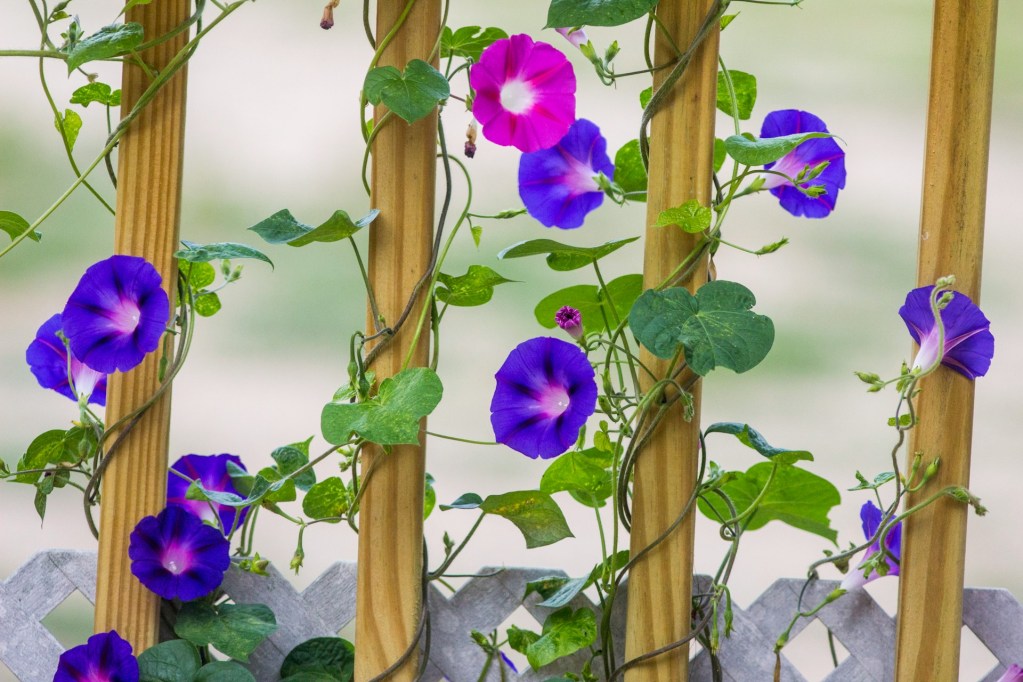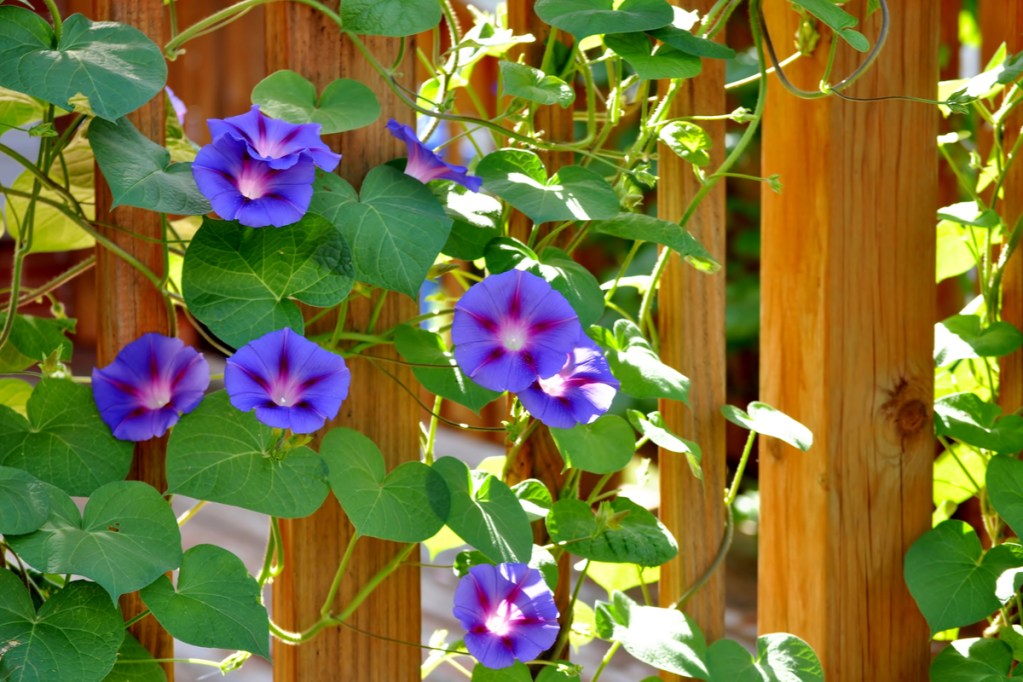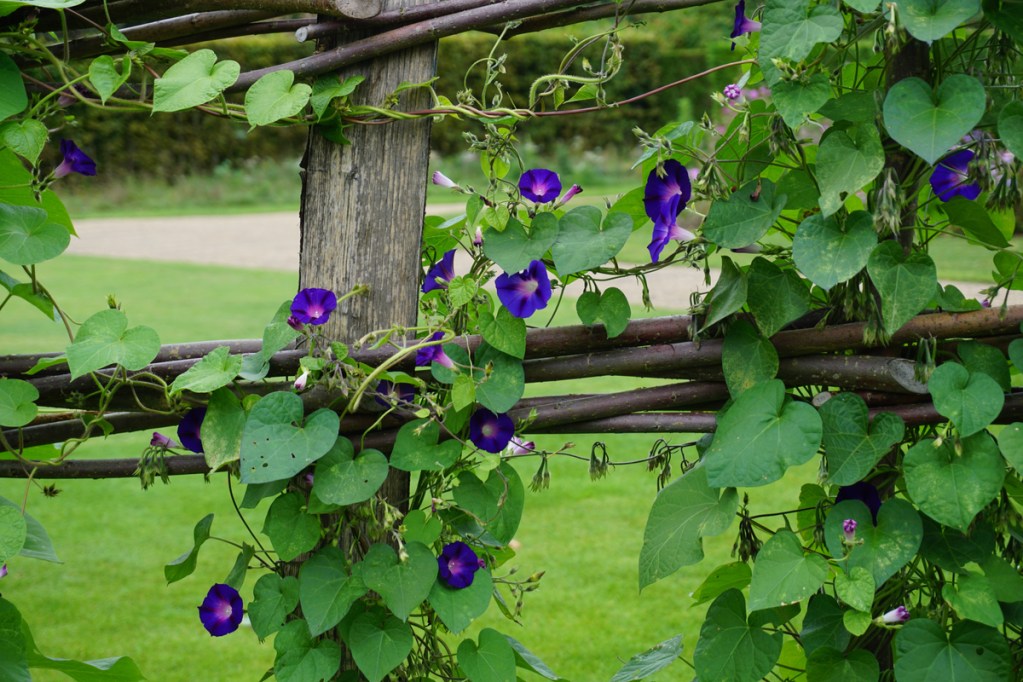
Morning glories are wonderful climbing plants that certainly live up to their name. Whether you prefer a more classic blue and purple variety or want to try a daring scarlet or black, these flowers are easy to grow, even for gardeners who are just beginning their growing journey. If you’re intrigued by morning glories and want to try your hand at growing them, then you’re in the right place. In this handy guide, we’ll lay out everything you need to know about how to plant morning glory flowers and how to care for them.
Benefits of growing morning glory flowers

If you’ve been thinking about growing morning glories, you don’t need to think twice if you live in the appropriate climate zone and have just the right conditions for them to thrive. They come in gorgeous colors—most notably a lovely lavender blue color. As their name suggests, they open up during early morning, then close up a few hours later.
Besides their lovely aesthetic, morning glories can benefit your landscape in other ways. Their trumpet-shaped flowers, for example, attract beneficial pollinators such as hummingbirds. Their fast-growing habit also means that they can make for a gorgeous privacy screen in your yard. And, as we’ll cover more below, they’re not too tricky to grow, so you can feel extra productive in the garden.
Planting morning glories

Morning glories are planted in late spring or early summer when the soil is 64 degrees Fahrenheit or above. It’s important to plant them after all chance of frost has passed. Morning glories are sensitive to cold, and their thin stems and leaves can be easily damaged by cold wind and frost if left exposed. Choosing a sheltered planting spot can help your morning glories survive, especially if you want to grow them as perennials in the northern half of their growing range.
In mild climates, you can plant your morning glories later than early summer, but be aware that you’ll likely have a shorter growing season. In any case, the planting location should have well-draining soil and receive plenty of sun. In hotter climates, consider giving your morning glories morning sun and afternoon shade.
You can sow the morning glory seeds directly into the soil, planting them only a quarter of an inch deep and roughly 6 inches apart. However, you can increase your odds of a successful planting by scoring and soaking the seeds. Gently scratch the outer coating of the seed and soak it in clean water for a day before planting. Direct contact with water helps to jump-start root production.
Caring for morning glories

Once your morning glories are planted, you should begin to see sprouts after only a week or two. Be careful not to uproot your new shoots when manually removing weeds. A layer of mulch around the base of the plant can help suppress weeds and keep the soil moist. You can add a small amount of balanced fertilizer, but over-fertilization leads to more leaves and fewer flowers. When the soil dries out, you can water your morning glories, but in many cases, they’ll thrive on rain alone.
An important thing to keep in mind when caring for your morning glories is that they’re climbing vines. Although they will grow along the ground for short distances, this leaves them more vulnerable to pests and diseases and generally leads to a shorter lifespan. However, you don’t necessarily need something fancy for them to climb. Morning glories don’t discriminate when it comes to climbing and will grow over anything they’re near. Fences, trellises, walls, and trees are all viable options.
You should begin seeing flowers within a few months, and those flowers will likely produce seed pods. Morning glories will self-seed, so you can let the plant drop its seeds without interference if you want more morning glories. However, if you want to control the spread of your morning glories, you can pinch the flowers or seed pods off of the vine before the seed pod is fully dry.
Pests and diseases

Thanks in part to how quickly they grow, morning glories typically escape most pest damage. You may notice small insects snacking on the leaves or vine of your morning glories, especially aphids, mites, and caterpillars. In most cases, you won’t see major damage. However, if you have a serious infestation or you want to take preventative measures just to be safe, then there are plenty of options for you.
There are many chemical pesticides you can use, but if you want a more natural solution, we recommend capsaicin spray. Capsaicin is the chemical in peppers that makes them spicy. Spraying it on the leaves of a plant makes the foliage unappealing to pests that might want to take a bite.
Incorporating morning glories into your landscape

Morning glories are easy to incorporate into any garden or yard as long as you have something for them to climb. You can grow morning glories in a hanging basket, but they tend to grow up onto whatever the basket is hanging from rather than cascading from the basket, as some other vines will.
However, they also climb well without any intervention from gardeners, which makes incorporating them much easier. All you need to do is select what you want them to grow over and place it next to where they’ll emerge. They will grow along fences, or you can get or make a trellis. You can even plant them at the base of a vertical garden, and they’ll grow up the wall under or next to the garden.
Morning glories are a great choice if you’re low on horizontal space or love their pretty blue color. They’re easy enough for beginners to grow and will even self-seed, so you don’t need to worry about replanting. All in all, morning glories offer plenty of rewards for low effort.
Editors' Recommendations
- Focus on color: Yellow plants that will bring cheer to your garden
- Drought-tolerant pollinator plants that will survive any climate
- Our 4 favorite sedum varieties for a drought-tolerant garden
- 9 tasty companion plants for tomatoes in your summer garden
- Cosmos flower care: How to grow this daisy-esque bloom



